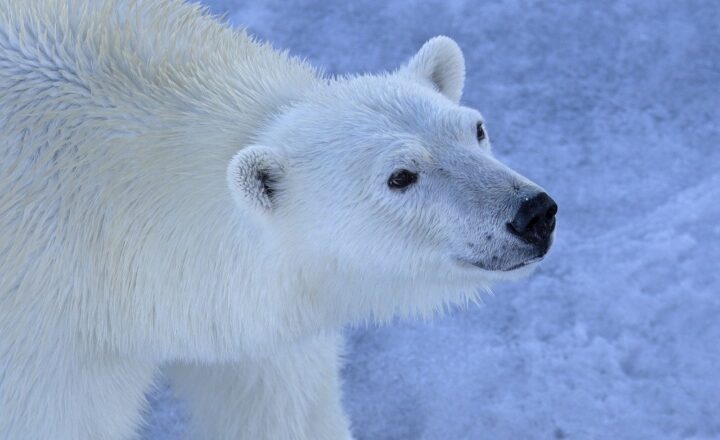The Role of Bees in Shaping Ecosystems and Food Security
November 16, 2024

Bees are often thought of simply as the small, buzzing insects that collect nectar and pollen from flowers. However, their role in our ecosystems and food security is far more profound. Bees are critical pollinators, and their activities impact not only the plants they visit but the entire food web, including the health of human populations. In this article, we will explore the multifaceted role bees play in our ecosystems, the importance of their pollination services, and the implications of their decline on food security and biodiversity.
1. The Basics of Bee Biology and Behavior
To understand the role of bees in our ecosystems, we must first familiarize ourselves with some basic bee biology. There are over 20,000 species of bees around the world, with honeybees, bumblebees, and solitary bees being the most well-known. Bees have a unique anatomy adapted for their role as pollinators, including hairy bodies that collect pollen and specialized mouthparts for drinking nectar.
Moreover, bees are social insects; honeybees and bumblebees live in colonies where they work cooperatively to accomplish tasks, unlike solitary bees, which operate independently to gather resources and reproduce.
2. The Importance of Bee Pollination
Pollination is a critical process through which pollen is transferred from the male parts of a flower to the female parts, allowing the plants to reproduce. Approximately 75% of the world’s flowering plants rely on animal pollinators, and bees contribute to a significant portion of this pollination.
Why is Bee Pollination Important?
– **Food Production:** Bees help pollinate fruits, vegetables, nuts, and seeds. Crops like almonds, apples, blueberries, and cucumbers all depend on bee pollination. Reportedly, one-third of the food we consume relies on pollinators.
– **Biodiversity:** By assisting flowering plants in reproduction, bees play an essential role in maintaining plant diversity. A diverse plant community supports a variety of animal species, creating a balanced and resilient ecosystem.
– **Habitat Stability:** Pollinators are crucial for the health of entire ecosystems, as their role in plant reproduction ensures that habitats remain stable and able to support complex food webs.
3. Challenges Facing Bee Populations
Despite their profound importance, bee populations around the world are in decline. This decline can be attributed to various factors, including:
– **Pesticides:** Certain chemical pesticides, particularly neonicotinoids, are harmful to bees and can disrupt their navigation and reproduction processes.
– **Habitat Loss:** Urbanization and agricultural practices often result in habitat destruction, reducing the availability of flowers and nesting sites for bees.
– **Climate Change:** Changing weather patterns and temperatures can alter flowering times and lead to mismatches between the life cycles of bees and the plants they depend on.
– **Disease and Parasites:** Bees are susceptible to several diseases and parasites, such as the Varroa mite, which has devastated honeybee populations in many regions.
This decline poses a significant risk not only to bees themselves but also to our entire food system and biodiversity.
4. The Consequences of Bee Decline on Food Security
As bee populations dwindle, the impact on food security and nutrition becomes critical. If bee pollination decreases, many crops will yield less fruit, produce lower quality crops, or become entirely unviable. Here are some implications of bee decline on food security:
– **Reduced Crop Yields:** Many fruits and vegetables that rely heavily on bee pollination will suffer. For instance, the US almond industry, valued at $5.6 billion, is entirely dependent on honeybee pollination.
– **Increased Prices:** As crop yields decline due to reduced pollination, food prices may increase, impacting consumers and the food supply chain.
– **Nutrient Deficiency:** With fewer pollinated crops available, diets may become less varied, leading to nutrient deficiencies and health problems in populations that rely heavily on these agricultural products.
– **Economic Impact:** Farmers will feel the economic burden of fewer crops. Ultimately, this could jeopardize jobs and contribute to losses within the agricultural industry.
5. Conserving Bee Populations: What Can We Do?
The good news is there are several strategies individuals, communities, and policymakers can adopt to help conserve bee populations and ensure they continue to thrive. Here are some actionable steps:
– **Use Bee-Friendly Practices:** Limit pesticide use, and share information on organic farming methods that are safe for pollinators.
– **Create Habitats:** Plant native flowers in gardens and parks that bloom throughout the seasons to provide nectar and pollen all year round.
– **Support Local Beekeeping:** Purchasing honey from local beekeepers helps support sustainable beekeeping practices, which can lead to healthier bee populations.
– **Educate Others:** Raising awareness about the importance of bees and their role in our ecosystem can encourage more people to take conservation actions.
– **Advocate for Policies That Protect Bees:** Support legislation at local and national levels that promotes pollinator habitat protection and reduces pesticide use.
Every small action counts when it comes to preserving bees and the crucial services they provide to our ecosystems and food supply.
Conclusion
In conclusion, bees are not just buzzing insects; they are vital players in maintaining the health of our ecosystems and securing our food sources. Their decline poses serious risks to biodiversity and food security, making it imperative that we take collective action to protect these essential pollinators. By embracing bee conservation efforts and supporting sustainable practices, we can work towards a future where bees continue to play their critical role in the world around us.
Bees are a cornerstone of our ecosystem and food security, and through our collective efforts, we can help to ensure their survival and flourishing for generations to come.







